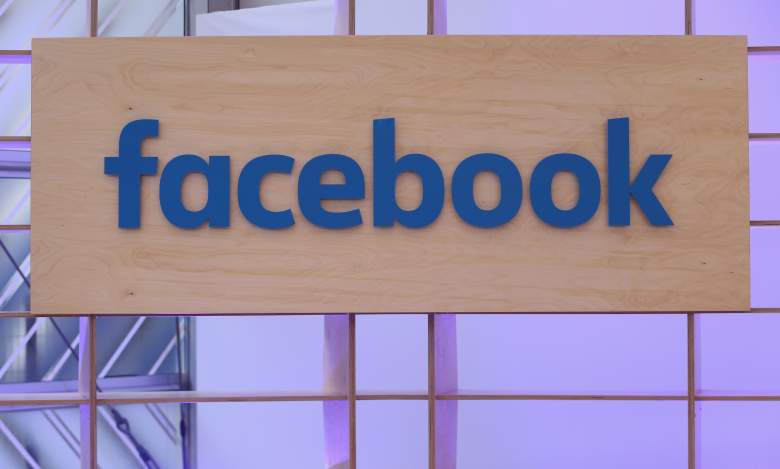
Facebook Logo (Getty)
Hours after a video of the murder was posted to Facebook, the social media platform issued a statement condemning the act and the publishing of such graphic content.
Steve Stephens posted a video on Facebook of himself shooting and killing Robert Godwin Sr. on a street in Cleveland on April 16. It was removed by the website about three hours later, but not before it spread throughout social media.
Facebook issued a statement hours after Stephens’ heinous act to say that it doesn’t allow any kind of content similar to the video he his profile, which has now been deactivated. The extremely graphic video showed Stephens driving around Cleveland and gunning down Godwin as he walked with a bag full of cans.
A spokesperson for Facebook called the murder a “horrific crime,” adding that it doesn’t allow any type of content like that on its website.
This is a horrific crime and we do not allow this type of content on Facebook. We work hard to keep a safe environment on Facebook, and are in touch with law enforcement in emergencies when there are direct threats to physical safety.
It’s currently unclear what measures — if any — Facebook is taking to dismay similar criminal acts.
Initial reports claimed that Godwin’s murder was streamed on Facebook Live, but Facebook clarified that in another statement later in the day.
It said that Stephens did indeed post streams to Facebook Live earlier in the day saying that he was going to go on a murder spree. But the video of him brutally gunning down Godwin was recorded on an electronic device and then posted on his account, not live streamed with the tool.
Godwin’s Murder Another In Long Line of Acts Posted to Facebook
The murder isn’t the first time that a heinous crime or act of violence has been posted to Facebook. Though it seems to be one of the first instances in which a murder suspect posted the entire act of a killing to the website.
Facebook Live, which launched about one year ago, has been the tool used for users to broadcast countless acts of violence against others, or themselves.
A video posted to Facebook in February showed footage of a 2-year-old boy and a 26-year-old man being murdered and a pregnant woman being wounded in Chicago. The incident was broadcast on Facebook live by one of the victims.
The child, identified as Lavontay White Jr., was killed by a gunman in the backseat of a car in Chicago.
Facebook has recently taken the issue of its streaming service being used to publicized criminal acts into its own hands and has introduced measures to halt the growing trend.
On March 1, it said that it was going to integrate suicide prevention tools on the website because of a growing phenomenon which saw users posting threats of self-inflicted harm and videos of suicide on the live-streaming service.
But numerous videos of the acts don’t seem to be slowing down.
As recently as April 16, a shocking live-stream video of an Indian man’s suicide was posted on Facebook after he was facing death threats from two policemen.
The 32-year-old man had wrote a message on Facebook that said he was “facing threat to his life from a married woman in his neighborhood and her alleged lover after he told her husband about their illicit relationship.”
He followed that message by posting a live stream of him hanging himself from a ceiling fan.
Another of those instances took place January 22, with a 14-year-old girl from Florida live streaming her committing suicide by hanging herself with a scarf at her foster home. Viewers of Naika Venant’s live video broadcast asked her to rethink what she was doing, but others egged her on. The incident took place through the course of about two hours and resulted in her tragic death being published publicly on Facebook.
Just one week before Venant’s suicide, an aspiring actor killed himself after threatening to do so on Facebook Live just hours before.
Frederick Jay Bowdy, 33, shot himself in the head in his car in Los Angeles shortly after posting distraught messages on a live-streamed video on Facebook.
After the suicidal acts, Facebook announced it was going to begin providing suicide prevention tools within Facebook Live and Messenger. Those include live-chat support from organizations like the Crisis Text Line and the National Suicide Prevention Lifeline, USA Today reported. It now has a page explaining what to do if a user is feeling depressed or suicidal and what to do if another user encounters a threat of suicide on Facebook.
But it hasn’t been just suicides that have been published on Facebook. Numerous graphic assaults have also been posted by users and then removed by Facebook.
In March, a 15-year-old girl from Chicago was sexually assaulted by a 14-year-old boy and at least four others in a video that was broadcast live on Facebook. None of the video’s 40 viewers contacted police while the assault was ongoing.
That incident came about one month after four people in Chicago were arrested after they were shown taunting and beating a mentally handicapped man on Facebook Live. Four people were arrested in the attack and plead not guilty in court.

Comments
Steve Stephens Murder Not 1st Time a Heinous Act Has Been Posted to Facebook